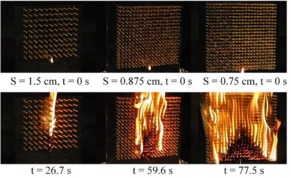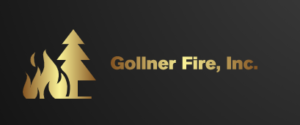New paper published in the Proceedings of the Combustion Institute: Flame spread and burning rates through vertical arrays of wooden dowels
Flame spread and burning rates through vertical arrays of wooden dowels
Abstract
Fuel loads in real-world fire scenarios often feature discrete elements, discontinuities, or inhomogeneities; however, most models for flame spread only assume a continuous, homogeneous fuel. Because discrete fuels represent a realistic scenario not yet well-modeled, it is of interest to find simple methods to model fire growth first in simple, laboratory-scale configurations. A detailed experimental and theoretical study was therefore performed to investigate the controlling mechanisms of flame spread through arrays of wooden dowels, with dowel spacings of 0.75, 0.875, and 1.5 cm. Flames were found to spread vertically for all spacings; however, for the 1.5 cm spacing, the gap was too large for horizontal flame spread to occur. A radiation-controlled model for horizontal flame spread was developed that predicted the horizontal flame spread rate through various arrays of dowels. Combined with an existing convection-based model for vertical flame spread, both horizontal and vertical flame spread was modeled to predict the number of burning wooden dowels as a function of time. Using models for the burning rate of wooden dowels and boundary-layer theory, a global burning rate model was developed that provided reasonable agreement with experimental results.

default

